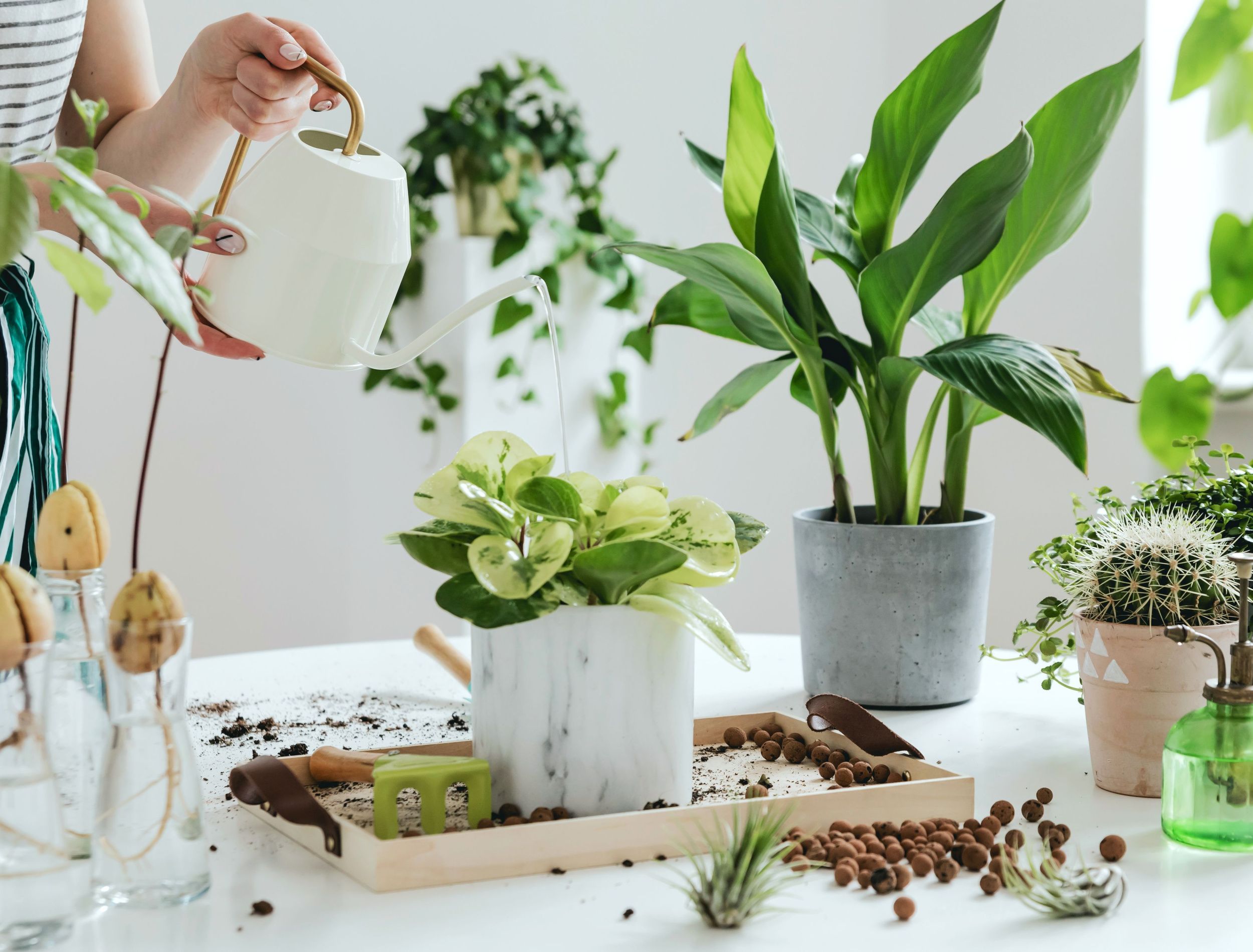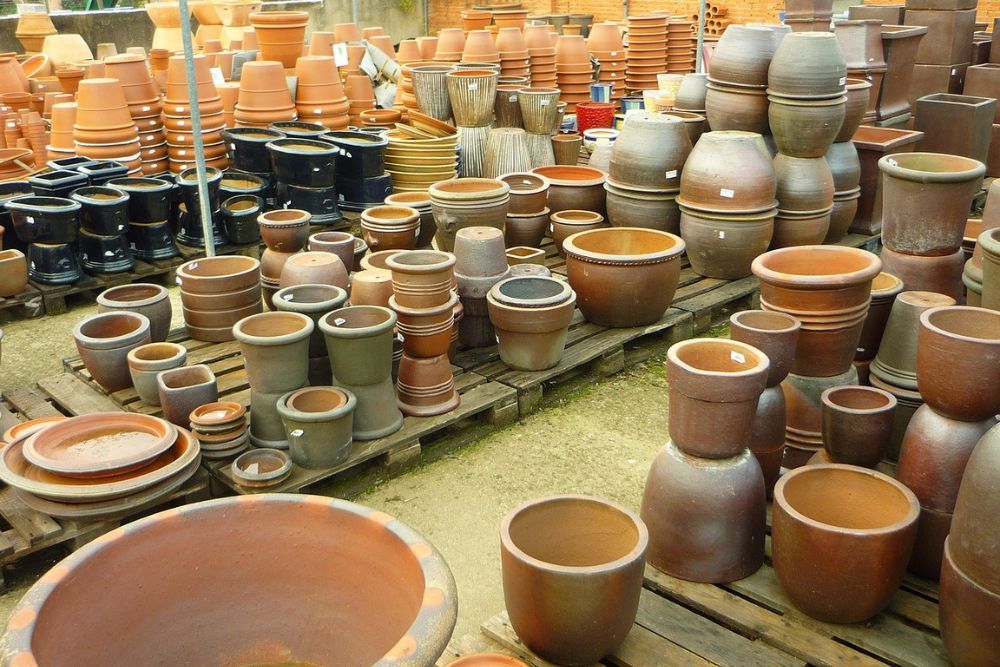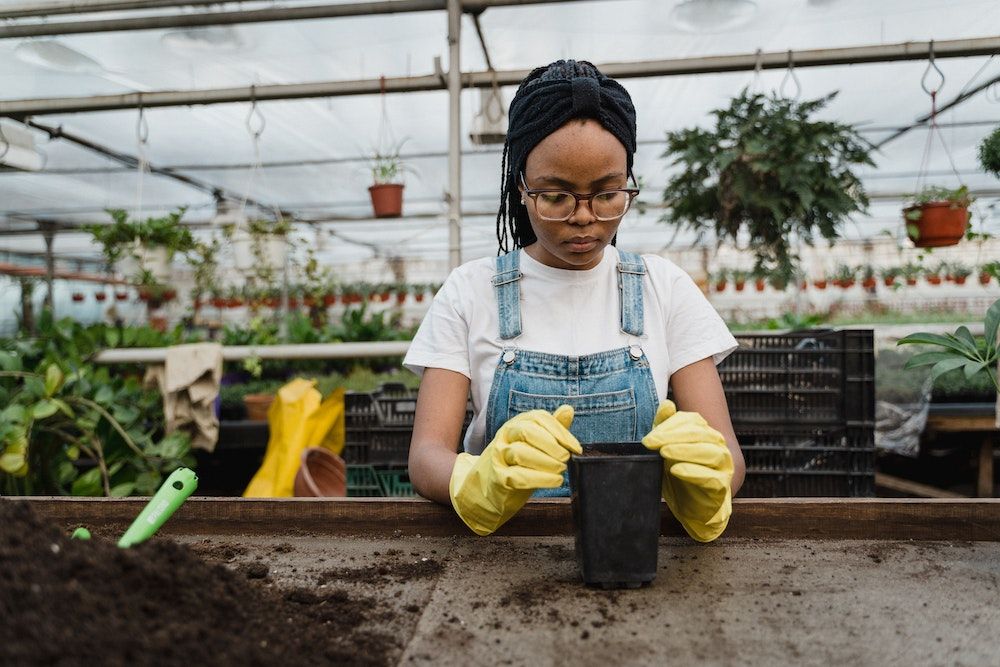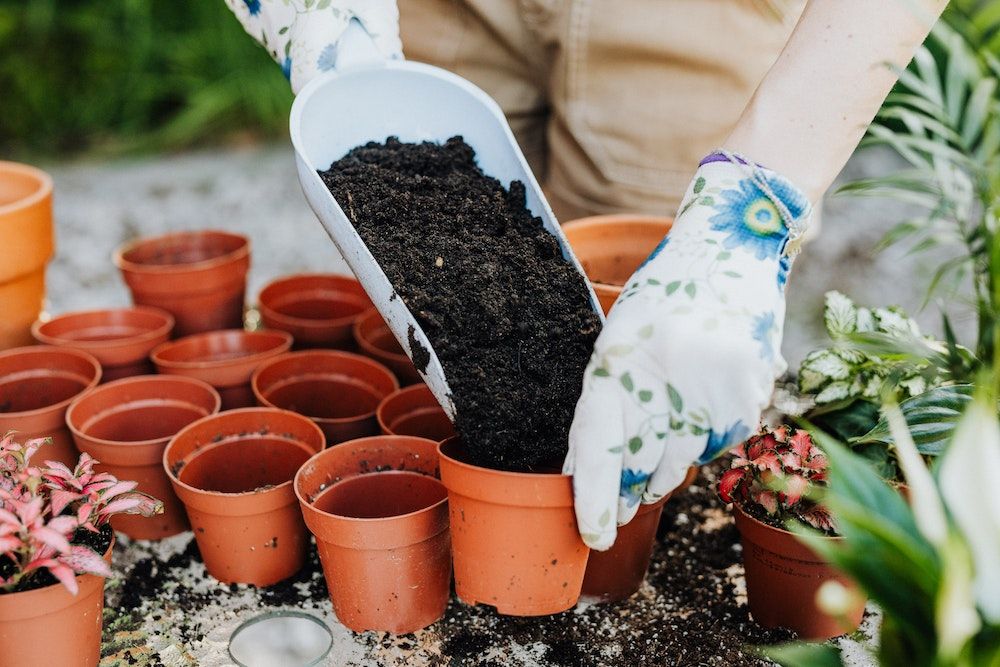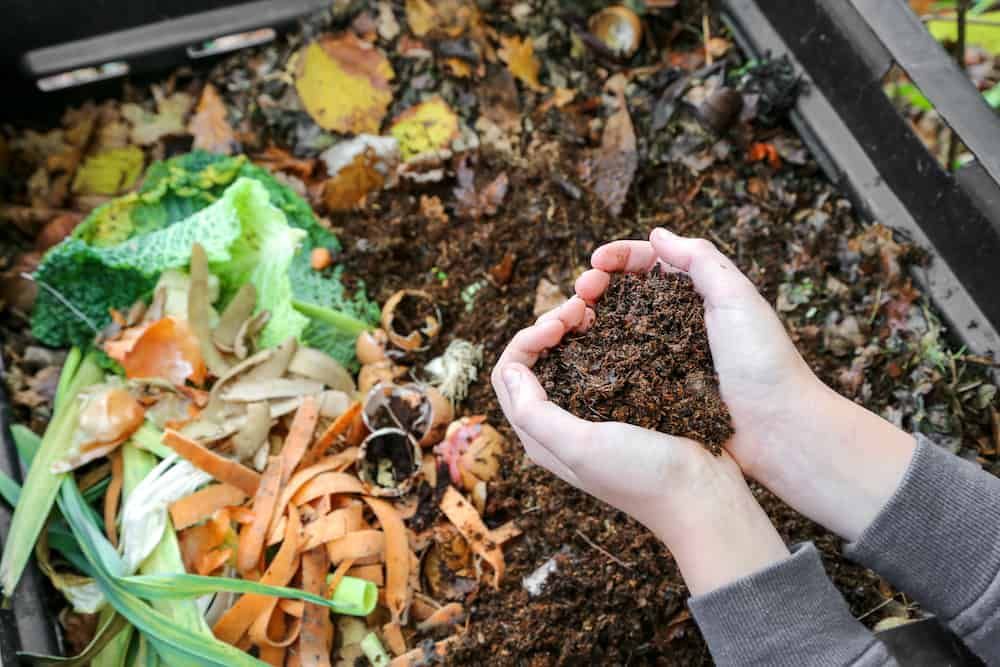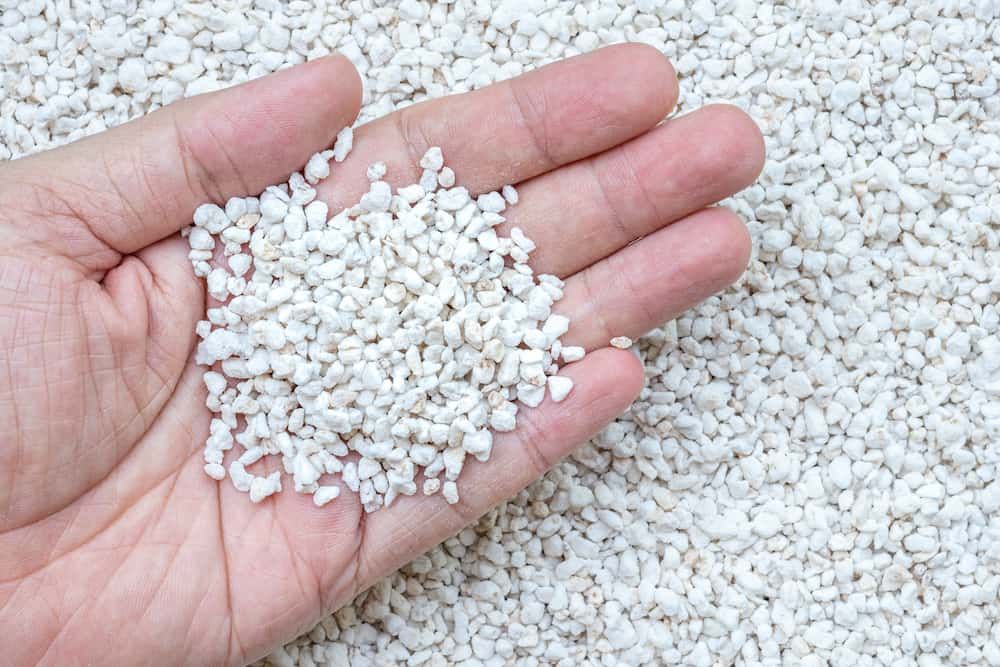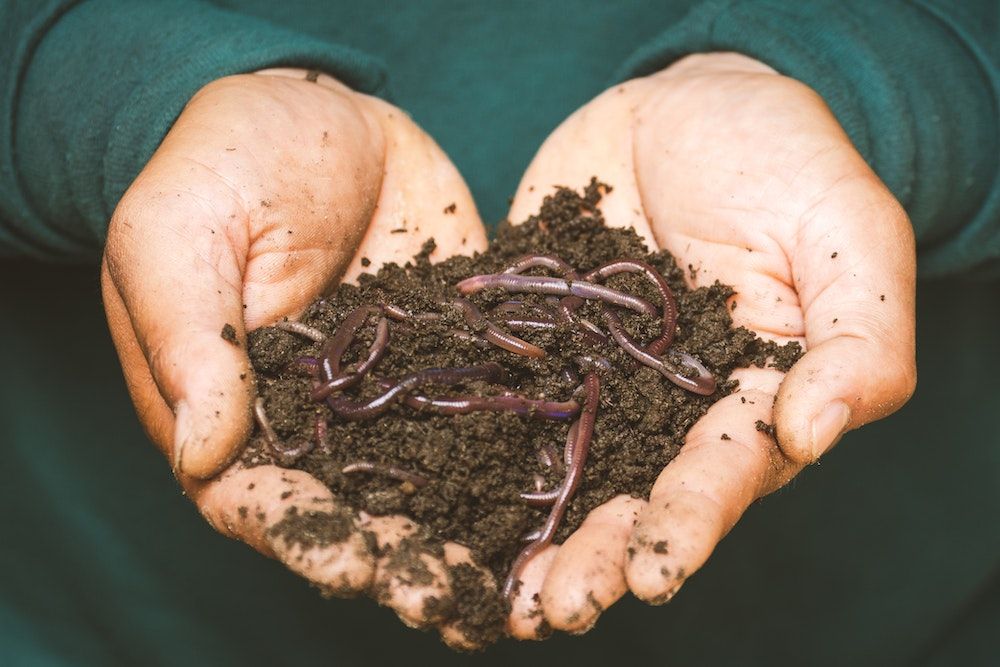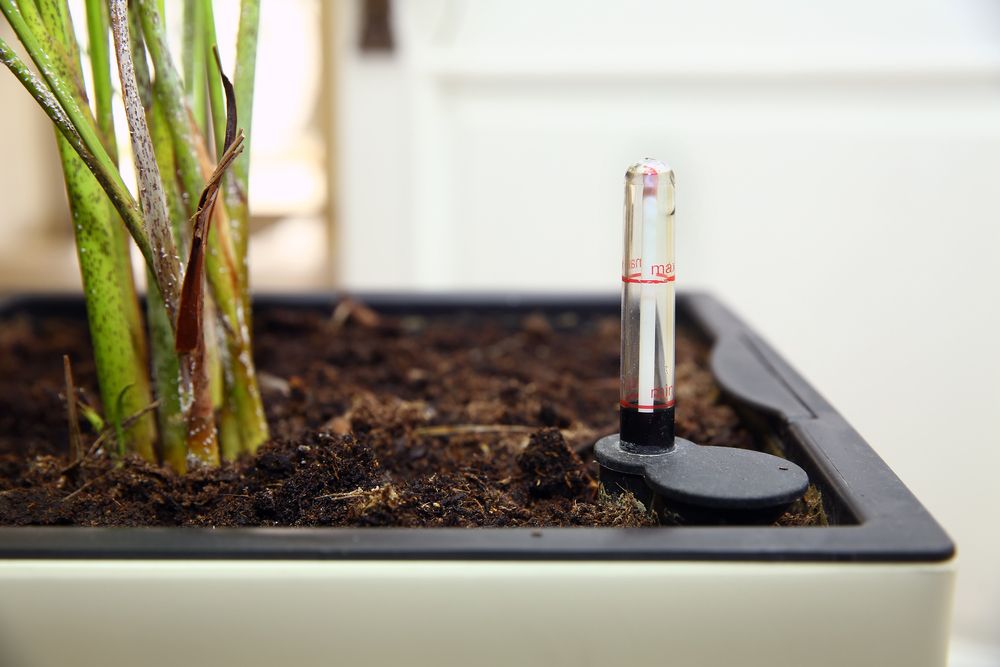When you're giving the best care to your houseplants, it's heartbreaking and confusing to see them wilt and their leaves yellow.
The importance of proper drainage is often overlooked, which is why your houseplants will wilt even if you follow a strict watering schedule to avoid under or overwatering. While nature is forgiving, most houseplants, like lavender and peace lilies, don't like wet feet and are quite sensitive to excessive moisture around their roots.
Houseplants need air, light, and water to grow healthy roots, but poor drainage can cause root rot and premature plant death.
Learn how to improve drainage in potted plants for healthy growth.
1. Choose the Correct Container
Image credits: Francisco Leão via Pixabay
Pots and containers come in many different sizes, shapes, and materials. From ceramic and wood ones to metal and concrete, you may be tempted to bring home a container that matches your outdoor decor.
That said, remember not all pots have the same drainage properties. Look at concrete, clay, and terracotta pots because the pores in these materials will help with leaching out the dampness. Unfortunately, this also means that you will need to water your plants more frequently.
Drainage holes are important, so if the container you picked has none, you can drill four to eight (½ 0r ¼ inch) holes yourself, depending on the size of the pot. The container size will depend on the height of the plant you wish to grow. For instance, if you want to grow sunflowers in containers, you'll need a 6-inch pot per sunflower seed.
Pro-Tip: A good soil moisture tester will ensure you're not overwatering your plants.
2. Choose the Best Potting Soil
Image credits: Tima Miroshnichenko via Pexels
One of the easiest ways to improve drainage is by choosing the right potting mix for your container plants. You can purchase the best ready-to-use potting soil for container plants online or DIY it yourself. While store-bought mixes tend to work well with most plants, you can tailor homemade potting soil to the needs of your plants.
The ideal potting soil should have perlite, coir fiber, vermiculite, and compost. Vermiculite and coir fiber help your soil retain moisture, while perlite helps keep the soil light and aids drainage. Lastly, compost provides nutrients and organic materials to the potting mix.
To prepare the soil for perennials, veggies, flowers, and tropicals, you'll need:
|
6 gallons |
sphagnum peat moss/coir fiber |
|
5 gallons |
perlite |
|
6 gallons |
compost |
|
¼ cup |
lime (only if you’re using peat moss) |
|
1½ cup |
granular organic fertilizer |
If you don't want to use organic fertilizer, you can make your own homemade fertilizer by combining:
- 2 cups of rock phosphate,
- 2 cups of greensand,
- ½ cup of bone meal,
- ¼ cup of kelp meal.
Once you have all your ingredients, lay out a tarp or place a large container on a flat surface. Mix all the ingredients thoroughly before use.
3. Don't Layer Your Pot With Rocks
Image credits: Karolina Grabowska via Pexels
Before adding soil, some gardeners used to add a layer of rocks or brick pieces at the bottom of the pot to promote drainage. Adding rocks at the bottom will move wet soil toward the base of the plant and closer to the roots, eventually leading to rot.
Instead of adding rocks, let your potting mix be your first layer, followed by a layer of organic matter, which includes leaves, coco coir, hay, or dried grass. Top this off with the remaining potting mix, but don't fill your pot to the brim. You can even add a layer of topsoil to aid drainage.
4. Add Compost to Your Soil
Image credits: Jerome.Romme via Shutterstock
Compost is great for your plants for many reasons:
- It helps improve the soil's fertility and structure,
- Improves the soil's water drainage ability,
- Increases the soil's nutrient content,
- Protects the plant from soil-borne diseases,
Add compost to your potted plants in the fall after testing the soil's pH. Since your potting soil's nutrients can deplete over time, adding an inch of compost twice a year will help your plants thrive. That said, when adding compost, be careful and gentle, so you don't disrupt your plant's root system.
5. Add Inorganic Amendments for Improved Structure
Image credits: RPA Studio via Shutterstock
If you work with a ready-to-use potting mix that doesn't contain a good amount of inorganic soil amendments, you can add them to improve your soil's drainage, health, and structure. For example, if your potting soil is losing moisture too quickly, add vermiculite to the mix and if it's retaining moisture for too long, add perlite to prevent root rot.
6. Add Earthworms for Better Drainage
Image credits: Sippakorn Yamkasikorn via Pexels
You may feel squirmish at the thought of adding a handful of earthworms to the soil, but your plant will thank you for adding them to the pot. Earthworms dig through the soil, which improves aeration and water drainage. Moreover, the castings they leave behind in the soil are packed with nitrogen, a key element your plants need for healthy growth.
7. Use Self-Watering Pots
Image credits: Adil Celebiyev StokPhoto via Shutterstock
Self-watering pots draw water from a reservoir at the bottom, but in a way that will not get the soil too damp. Water is typically drawn up through the use of motion sensors, rope wicks, or capillary action using soil columns.
They are very useful for people worried about overwatering their plants or those often away from home and tend to give their plants “a little extra” water, which can ultimately damage the plant. Self-watering pots are easy to DIY but require basic experience handling drill machines.
Drain, Drain, Baby!
Water is extremely important for houseplants to thrive, but too much water and a lack of proper drainage will lead to root rot. This is why it's important to ensure your pots have drainage holes to prevent water from pooling around your plant's roots.
Happy Gardening!

